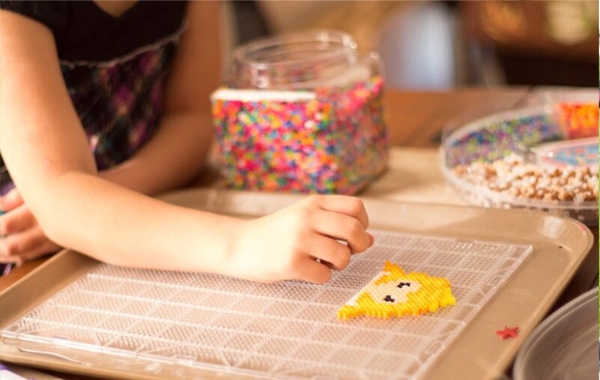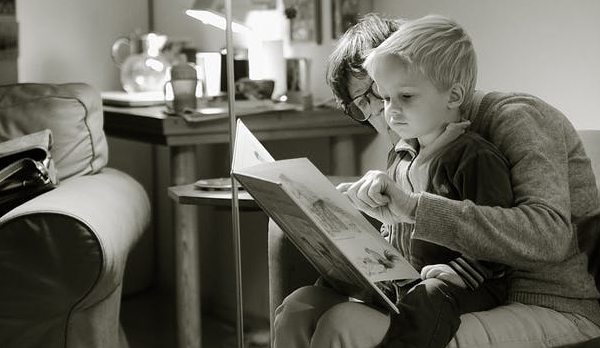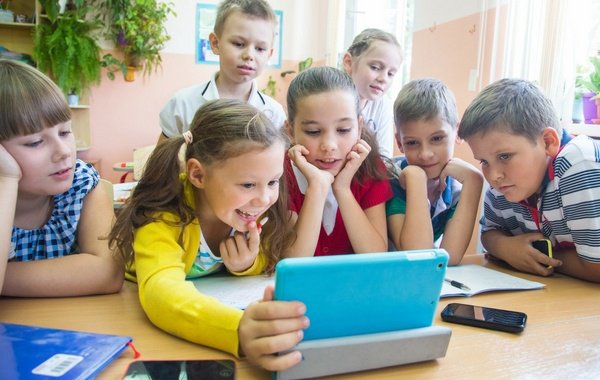Homeschooling: Four Types of Learners
For a more effective homeschooling journey, understand the four types of learners and identify which type your child is.

Among the many unique challenges of homeschooling is determining the most effective teaching style that resonates most with your child. This, of course, is also likely a big part of the reason why you’ve chosen a homeschooling journey in the first place: to foster a more supportive and enriching learning environment.
To understand how best to teach, however, you must first understand how your child learns best, because when it comes to learning, one size certainly does not fit all.
Throughout history, scientists and psychologists have worked to develop a number of models and theories in order to better understand the different ways people learn. One of the most popular theories is known as the VARK model. It defines four primary types of learners: visual, auditory, reading/writing, and kinesthetic.
Four Types of Learners
According to the VARK Model, these are the four types of learners:
- Visual
- Auditory
- Reading/writing
- Kinesthetic
This model, which expands upon earlier Neuro-linguistic programming (NLP) models, was pioneered and launched by New Zealand teacher and researcher Neil Fleming in 1987.
Fleming found that each learning type responds better to a certain method of teaching, but that most individuals are in fact multimodal learners. In other words, children are a little bit of each learning type. But they will likely have a preferred style that helps them process information more efficiently.

Knowing these four learning modalities can help homeschooling families find solutions to help their children learn and study more effectively and with less stress.
- Related: Raising Einsteins: Bacolod Intervention and Tutorial Center for Children with Special Needs
Learn about the four learning styles below along with how to determine which your child might be and how best to teach them.
Visual
Visual learners have immensely vivid imaginations and process information in pictures, visualizing relationships and ideas in order to understand them. You can have an area in your family room dedicated to visual representations of your homeschooling lessons.
Your child may be a visual learner if they:
- become impatient or unfocused when required to listen for extended periods of time.
- prefer to work alone rather than in groups.
- doodle in their notebooks.
- enjoy reading and other periods of quiet time.

When teaching, try to incorporate maps, diagrams, and other ways of visually explaining information and relationships between topics and ideas in your homeschooling lessons. Also encourage the use of flashcards as a study tool and leverage color coding where applicable.
Auditory
As the name suggests, auditory learners process information best when given the opportunity to listen to it.
Your child may be an auditory learner if they:
- read and speak in a calculated manner.
- get distracted easily by other noises.
- lose focus when forced to work alone quietly for long periods of time.
- talk through problems out loud, even to themselves.

If you have a predominantly auditory learner, a great tool to use is a student-friendly homeschool video curriculum. Video is actually a great tool for all kinds of learners as it engages multiple senses and can be leveraged in a number of ways. Also consider making audiobook versions of any homeschooling text materials available. Then encourage your child to record lessons to listen to again later.
Readers and Writers
Reading and writing learners do very well with traditional education programs that rely heavily on textbooks and notetaking. Essentially, interacting with the written word is more powerful than looking at images or listening to information explained out loud.
Your child may be a reading and writing learner if they:
- love reading and writing.
- write detailed notes and lists.

Encourage your child to rewrite their homeschooling notes as a way to study. Also provide them with annotated versions of presentations so they can read along with you. Additionally, allow space for them to add their own thoughts and reactions. Written “quizzes” are also a great tool for helping them work out what they’ve learned.
Kinesthetic
Kinesthetic learners retain information by being demonstrative. This is the type of learner you can think of when people say “hands-on.” They learn best by doing and acting out concepts.
Your child may be a kinesthetic learner if they:
- Enjoy sports.
- Thrive doing art.
- Spend free time building things.
- Have difficulty sitting still for long periods of time.
Structure lessons around activities your child can participate in and that gets them up and moving around. Really, all children can benefit from learning activities that get them moving. Don’t take objects away from them that you feel may be distracting them.

On the contrary, throwing a tennis ball around or walking while reviewing homeschooling notes helps kinesthetic learners process information. Also make sure to schedule in frequent study breaks.
The kids other learning adventures:
- Hong Kong Disneyland
- Travel with Kids in Search for the Old and New
- Baguio Birthday Adventure for Kids


Love the information here. I have played with the idea of home schooling my kids for some years now. I am not sure I can do it.
I have to admit that the homeschooling journey is not for everybody. But if it’s just fear, I know you can overcome it. 🙂
This is a great post! My daughter is somewhere between visual and a reader. With a touch of kinesthetic. As a homeschooling mom that’s what I love about what we do, I can adapt to her and because of it she’s flourished!
Thanks so much for this. I don’t homeschool my daughter but try to support her at home with supplementary learning I am still trying to figure out if she is a visual or reading and writing leaner!
I love how you’ve addressed this! I am a teaching assistant and it annoys me how everyone is tested the same and taught the same way when we all learn so differently.
I didn’t homeschool, but I love all of these concepts and have always been a big believer in the idea that one size does NOT fit all for education.
Exactly. We are homeschooling because of the perspective that nobody should be boxed.
This is so great. I wish this could be better implemented in public schools as well! Growing up I had so many teachers trying to push their way of learning on me and it did nothing but hinder me. Everyone learns differently!
Even when you’re not homeschooling, it’s really good to know what your child’s learning type is so that you can help them learn their lessons better in school. Love this guide!
Exactly!
You’re so right! For the best homeschooling practice, it is important to understand how your kid learns. Although I wasn’t a homeschooler, I hated when teachers had to force things into your head because of not understanding how a student works. Anyway, I am reader and writer since keeping notes is just one of my things !
Nice that you are able to identify your learning type. 😀
It is so important to understand how much of a difference this could make in a child’s education. Thanks for sharing!
This is a wonderful idea for homeschooling according to the type of learners. Well, I think until now I did not know that I am just a visual learner!
I have a 1 year old and this was quite an helpful post! I am going to keep these points in mind as I teach my babe.
It is so important to learn how your child gets educated best. I learned that after 14 years of being in a public, traditional school setting that my teen needed a change. She was straight A’s all of her life until 9th grade and then BAM something changed. She was getting B’s and C’s, even had one D. I had no idea what was up, well the learning environment didn’t work for her anymore. Now? She’s home taking classes with an online charter school and will graduate early with a high school diploma at an actual graduation ceremony with a 4.0 GPA. It makes a difference when you learn how your kids learn best and help them find an education that works.
Wow! That is indeed a drastic change. But I’m glad that you were able to closely monitor her and that now she is thriving. 😀
I am also blessed to homeschool my child…. He is definitely a visual learner…
Our kids are in Online school from home, this was the first year. My son’s Math went from failing to a B+. My daughter is an amazing artist, we setup a website for her work. I think they are both visual learners, and Kara also might be a kinesthetic learner.
This is so informative! Saving for future reference!
Though I don’t yet have kids but it is great to know about the techniques even if the kids aren’t at homeschooling. Though in future if I have kids I would like to have them homeschooled. I would like to know more about this process of Kinesthetic way.
This was such an interesting post. It was really fascinating to read all the different types of learners and match them up with my own children.
Homeschooling is not allowed in my country but we try to teach our kid skills before school. She is not yet in ally of your categories
Oh my! It’s not allowed? Awww Am sad to hear that homeschooling is not an option in your country. 🙁
These are some great tips for mumma’s to better understand their child’s learning style. Keeping an eye on what and how they do things is necessary.
Fab tips here. My kids start primary school this Sept so this would definitely come in handy. I will bookmark it for further reading.
Nice post. Understanding these four types has helped me a lot with my studies. When I finally realized that I’m very visual learner I stopped going to those university lessons to listen the lecturer and instead spent my time doing my colorful notes including photos, etc. Also, while I read, I always remember the photos and tables better than the actual text.
That’s a great post, Sigrid, and I’m sure it will help lots of people considering homeschooling. I’ve been homeschooling my 4 for a decade and wouldn’t have it any other way.
That’s awesome! We are now going on our 5th year of homeschooling. So far, so good. We do have challenges, but I love it better this way than going to traditional school.
That’s something which every parent should know well. It was a nice read to know learner types and match the qualities with own kid — homeschooling or not.
Sounds like a lot of the breakdowns when I do training of tutors for my library program. We do all of those categories with Visual, Audio and Kinesthetic being the most frequently mentioned. But kids cross all of those learning styles at different times. Definitely useful information to know though.
These are such great principles to know for any teacher. And even for a parent to know what type of child theirs is. A lot of life is just about understanding each other! <3
I could never homeschool my daughter, I would totally freak out and think I was not doing her justice. But I know that it works well for some parents.